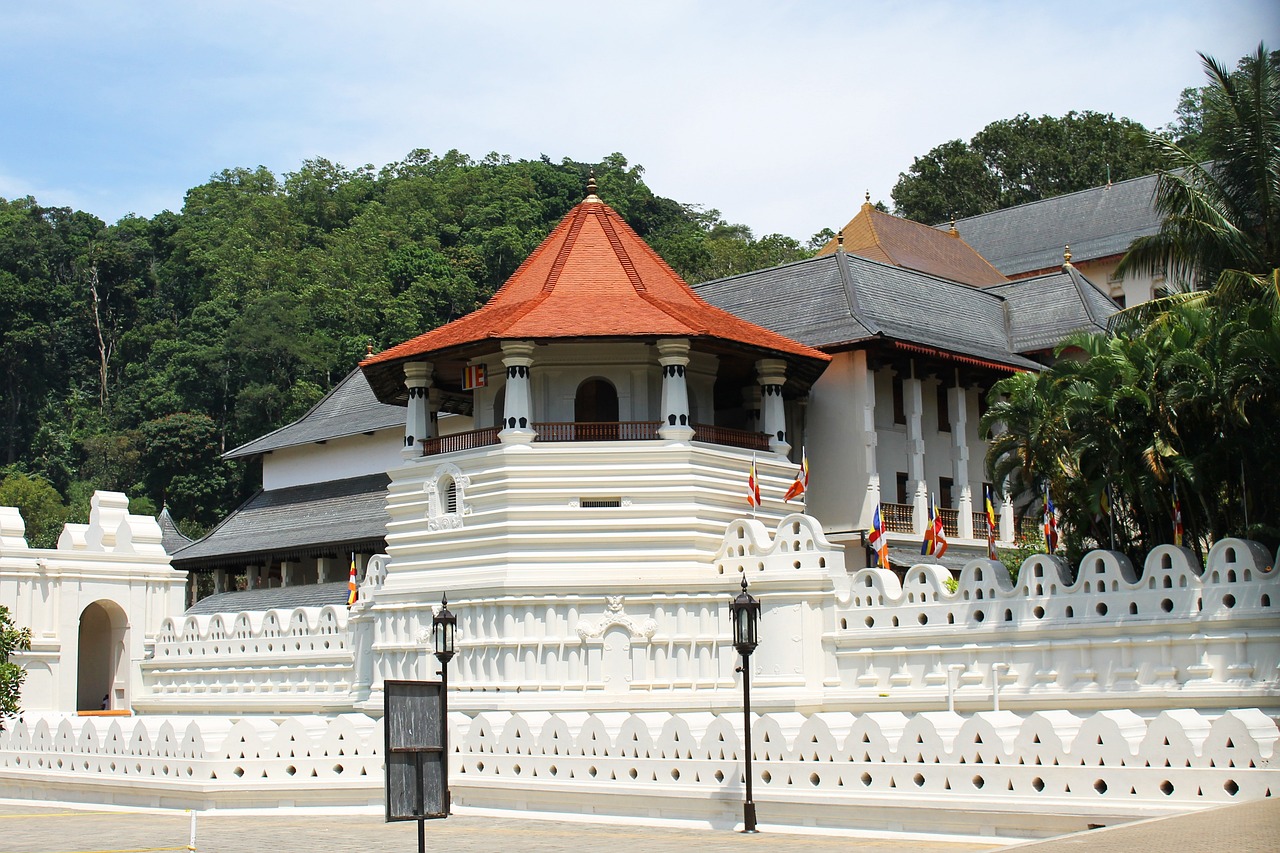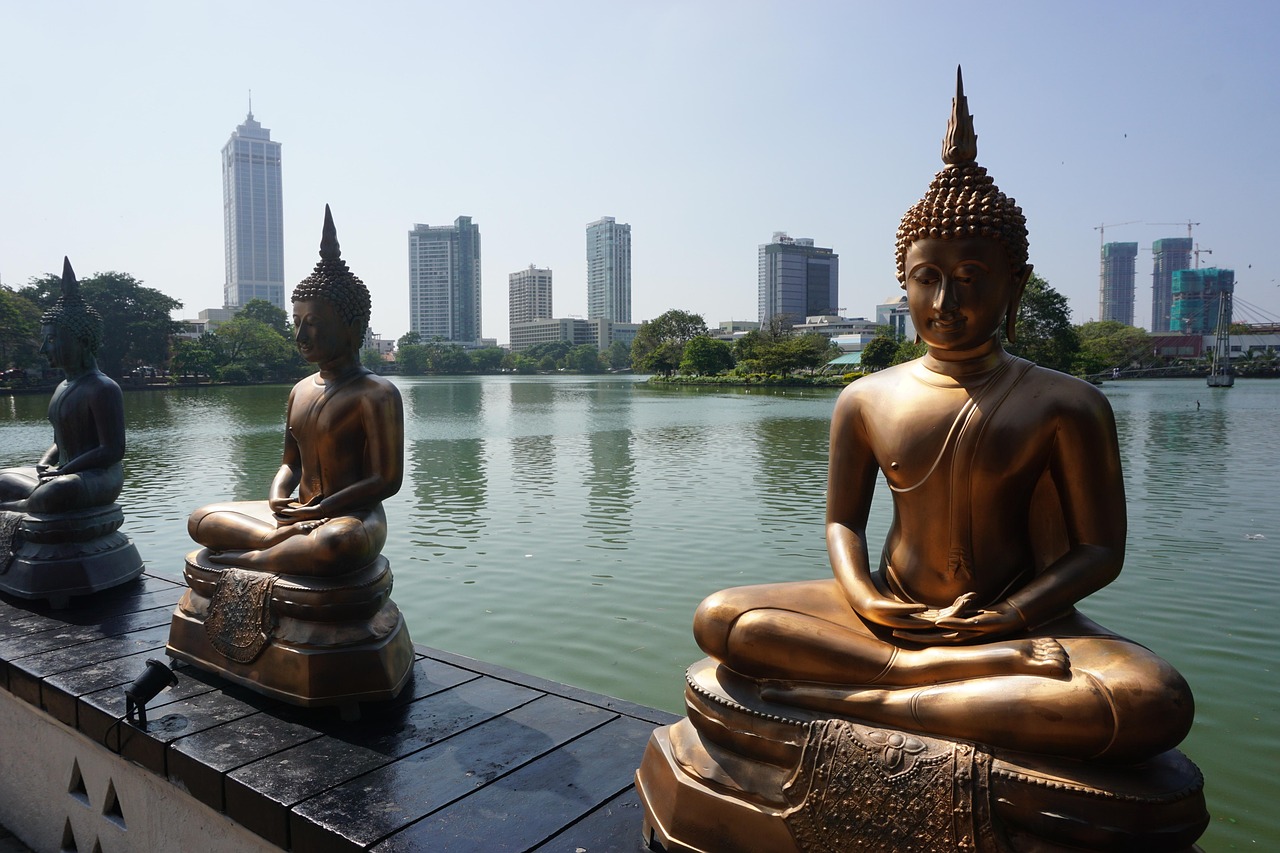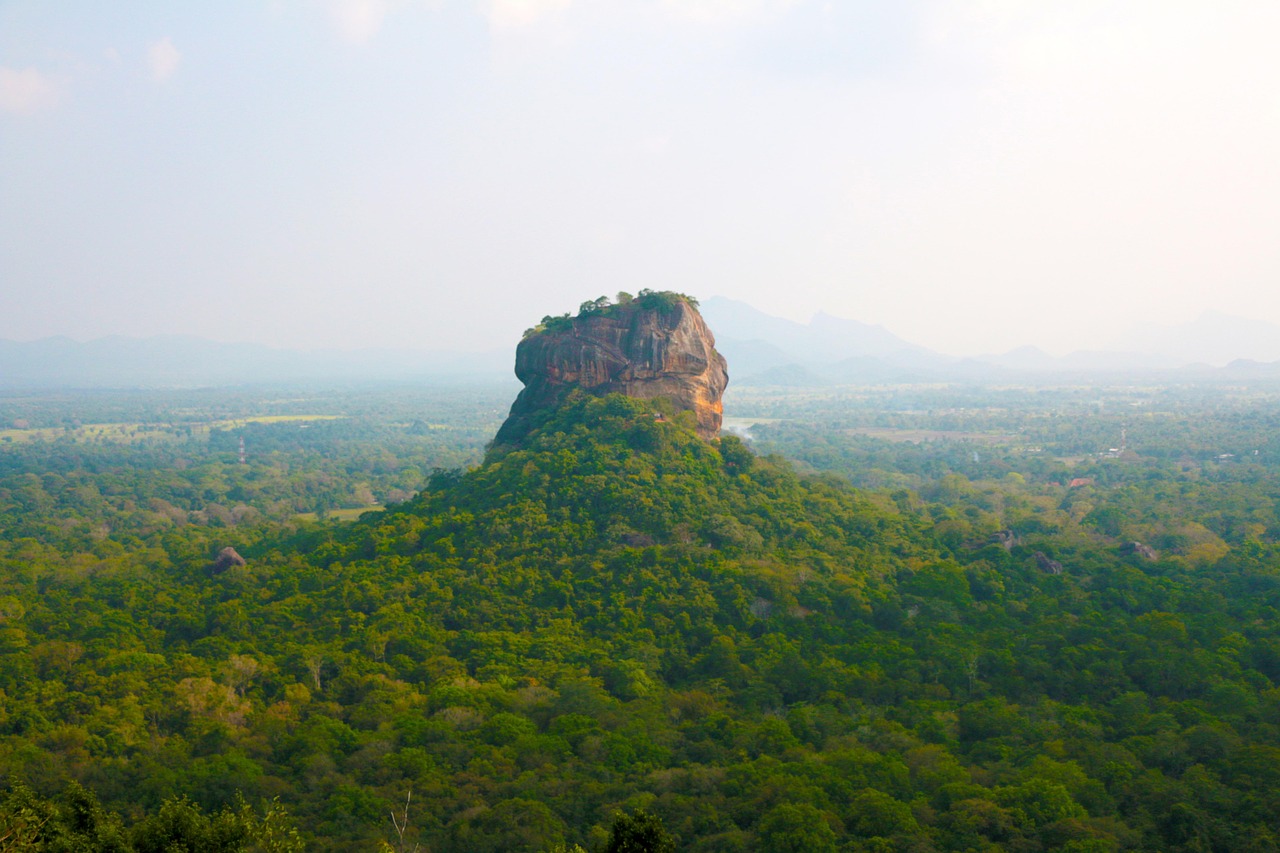Nestled among the misty hills of central Sri Lanka, approximately 115 kilometers from Colombo, lies Kandy—a city of profound historical significance and cultural richness. As the last capital of the ancient kings of Sri Lanka before British colonial rule, Kandy holds a special place in the nation’s identity and heritage. This UNESCO World Heritage Site combines natural beauty, architectural splendor, and living traditions to create an experience that captivates visitors from around the world.
Kandy Cultural and Historical Heart of Sri Lanka
Kandy’s history is a testament to Sri Lanka‘s resilience against colonial powers. While coastal regions fell to Portuguese and Dutch invaders in the 16th and 17th centuries, the Kingdom of Kandy maintained its independence for nearly three centuries due to its strategic highland location and the determination of its rulers.
The kingdom was established around 1474 CE after the decline of the Kotte Kingdom. Under the leadership of King Sena Sammatha Wickramabahu, Kandy developed as an independent state with its own distinct culture and traditions. The kingdom reached its zenith during the reign of King Rajasinha II (1635-1687), who successfully repelled multiple Portuguese invasions.
However, the kingdom’s autonomy eventually came to an end in 1815 when the British, after failed diplomatic efforts and strategic manipulation of internal politics, occupied Kandy and deposed the last king, Sri Vikrama Rajasinha. The Kandyan Convention, signed on March 2, 1815, ceded the kingdom to British rule while guaranteeing the protection of Buddhism and traditional customs—a promise that would later be contested by Kandyan nobles in the rebellion of 1817-1818.
Sacred Tooth Relic Temple (Sri Dalada Maligawa)
At the heart of Kandy’s cultural significance stands the Temple of the Sacred Tooth Relic (Sri Dalada Maligawa), a paramount shrine of Buddhism that houses what is believed to be Buddha’s tooth. According to legend, the tooth was retrieved from Buddha’s funeral pyre in 543 BCE and eventually brought to Sri Lanka in the 4th century CE, hidden in the hair of Princess Hemamali who fled India with her husband.
The tooth relic became not just a religious symbol but also a political one—whoever possessed the relic was believed to have the divine right to rule the land. This belief made the temple central to the legitimacy of the Kandyan monarchy.
The current temple complex was built primarily during the 17th and 18th centuries, though it has undergone numerous renovations and expansions throughout its history. The architecture exemplifies traditional Kandyan design with its red-tiled roofs, white walls, and intricate wood carvings. The complex comprises several buildings including the main shrine, audience halls, museums, and subsidiary temples.
Three times daily, ritual offerings (puja) are conducted in honor of the tooth relic, accompanied by traditional drumming and music. During these ceremonies, the chamber housing the relic is opened, allowing devotees to catch a glimpse of the golden casket containing it.
The annual Esala Perahera festival, held in July or August during the full moon, celebrates the tooth relic with one of Asia’s most spectacular processions. For ten nights, elaborately decorated elephants, traditional dancers, drummers, fire-dancers, and whip-crackers parade through the streets of Kandy, drawing thousands of spectators from across the world.
Architecture and Urban Design
Kandy’s architectural landscape reflects its royal heritage and the religious significance it holds. The city was designed with the Sacred Tooth Relic Temple as its focal point, surrounded by the artificial Kandy Lake (Kiri Muhuda), created in 1807 by the last king of Kandy.
The lake, with its distinctive white parapet wall, significantly enhances the city’s aesthetic appeal while serving as a practical water source. A small island in the center was reportedly used by the king’s harem for bathing and recreation, while another legend suggests it housed the king’s personal bathing pavilion connected to the palace by an underwater tunnel.
The Royal Palace complex adjoining the Temple of the Tooth contains several noteworthy structures, including the Royal Audience Hall (Magul Maduwa) with its ornately carved wooden pillars, and the Queens’ Bathing Pavilion (Ulpange) at the edge of the lake.
British colonial influence is evident in buildings like the Queen’s Hotel, originally the Governor’s residence, and the red-brick Kandy Post Office. The Victoria Golf Club, established in 1893, and the Royal Botanical Gardens at Peradeniya (founded in 1821) are further examples of colonial-era development.
Cultural Heritage
Kandy represents the pinnacle of traditional Sinhalese culture, having preserved many art forms and customs that declined in other parts of the island during colonial rule.
Kandyan dance (Uda Rata Natum) is perhaps the most famous cultural expression associated with the city. This highly athletic dance form, traditionally performed exclusively by males, includes acrobatic jumps, spins, and elaborate footwork. Dancers wear elaborate costumes featuring intricate beadwork, metallic adornments, and distinctive headdresses. Various types exist within the tradition, including the Vannam (descriptive dances based on animals) and the Kohomba Kankariya (rituals to ward off illness and misfortune).
Traditional crafts continue to thrive in Kandy and its surrounding villages. These include:
- Brass and silver work, particularly traditional oil lamps (pahana) and religious items
- Wood carving, including masks and furniture with traditional motifs
- Hand-loom textile weaving, especially the production of Dumbara mats and ceremonial fabrics
- Batik and traditional dyeing techniques
- Lacquerwork (Laksha) applied to wooden containers and ornamental items
The city is also known for preserving ancient healing practices of Ayurveda and traditional medicine, with numerous practitioners and treatment centers located in and around Kandy.
Religious Diversity
While Kandy is predominantly Buddhist and home to one of Buddhism’s most sacred sites, it also demonstrates Sri Lanka’s religious diversity. Hindu temples (kovils) dot the city, including the historic Kataragama Devale, Natha Devale, Pattini Devale, and Vishnu Devale—all part of the complex surrounding the Temple of the Tooth.
The city also hosts significant Christian churches, including St. Paul’s Church dating from 1846 and the Anglican St. Mary’s Church built in 1825. The Meera Makam Mosque represents the Muslim community that has been part of Kandy’s social fabric for centuries.
This religious coexistence demonstrates the multicultural nature of Sri Lankan society, though tensions have occasionally flared throughout history.
Natural Environment
Kandy’s geographical setting significantly contributes to its charm and historical significance. Situated at an elevation of about 500 meters (1,640 feet) above sea level, the city enjoys a considerably cooler and more moderate climate than the coastal regions of Sri Lanka.
Surrounding Kandy are lush hills covered with tea plantations, spice gardens, and tropical forests. The region’s biodiversity is remarkable, featuring endemic species of plants, birds, and insects. The Udawatta Kele Sanctuary, a forest reserve right next to the Temple of the Tooth, serves as a green lung for the city and hosts a variety of wildlife despite its proximity to urban areas.
The city’s natural defenses—steep hills and thick forests—helped the Kingdom of Kandy resist colonial invasions for centuries. Today, these same features make Kandy a refreshing retreat from the tropical heat of the lowlands and a gateway to Sri Lanka’s central highlands.
Modern Kandy: Challenges and Opportunities
Today, Kandy stands at the intersection of preserving its rich heritage while developing as a modern city. With a population of approximately 125,000 in the city proper (and over 1.7 million in the greater metropolitan area), Kandy faces typical urban challenges including traffic congestion, waste management, and balancing development with conservation.
Tourism forms a significant part of Kandy’s economy, with hundreds of thousands of visitors annually coming to experience its cultural and natural attractions. While this brings economic benefits, it also places pressure on infrastructure and raises questions about sustainable tourism practices.
The city serves as an important educational center, home to the University of Peradeniya (established 1942), one of Sri Lanka’s oldest and most prestigious universities. Various vocational training institutions and research centers also contribute to Kandy’s role in national development.
Traditional industries like handicrafts and food processing operate alongside modern sectors including information technology, with several technology parks and innovation centers being developed in recent years.
Culinary Traditions
Kandyan cuisine represents a distinct flavor profile within Sri Lankan culinary traditions. The region’s cooler climate and historical isolation led to the development of unique dishes and cooking techniques.
Rice remains the staple, often accompanied by numerous curry dishes. Some distinctive features of Kandyan cuisine include:
- Greater use of freshwater fish from the region’s lakes and rivers, prepared in tangy curry sauces
- Preference for jackfruit, ash plantains, and specific varieties of yams in vegetable dishes
- Liberal use of spices like cardamom, cloves, and cinnamon that grow abundantly in the surrounding hills
- Traditional sweets like kalu dodol (a sticky toffee-like dessert made with coconut milk and jaggery) and mung kavum (oil cakes made from green gram flour)
- Special preparation methods for meat dishes, particularly ambul thiyal (sour fish curry) and black pork curry
Traditional eating customs are still observed in many households, with meals served on lotus or banana leaves on special occasions, and eating with the fingers considered the proper way to enjoy the complex flavors and textures.
Festivals and Celebrations
The Esala Perahera, mentioned earlier in relation to the Sacred Tooth Relic, deserves further elaboration as the most significant cultural event in Kandy. This ten-day festival culminates on the night of the full moon in July or August (Esala) with a grand procession featuring:
- The sacred tooth relic carried on the back of a magnificently adorned elephant
- Hundreds of traditional dancers performing various regional dance styles
- Fire dancers and whip-crackers who clear the path for the procession
- Torch bearers illuminating the route
- Musicians playing traditional instruments like dawul (drums), thammattam (double drums), and horanawa (a type of oboe)
Beyond the Esala Perahera, Kandy observes numerous Buddhist holy days throughout the year, with Vesak (celebrating Buddha’s birth, enlightenment, and passing) being particularly important. Hindu festivals like Thai Pongal and Muslim celebrations like Eid are also observed by their respective communities, adding to the cultural tapestry of the city.
Conclusion
Kandy represents a living connection to Sri Lanka’s pre-colonial past and continues to be a vital center of Sinhalese culture and Buddhist tradition. Its successful resistance against European powers for nearly three centuries has made it a symbol of national pride and identity. The city’s recognition as a UNESCO World Heritage Site acknowledges its universal value as a testament to human creativity and cultural significance.
As Sri Lanka continues to navigate the complexities of modernization and globalization, Kandy stands as a reminder of the importance of preserving cultural heritage while adapting to contemporary realities. The city’s ability to maintain its traditions while embracing change offers valuable lessons in sustainable development and cultural continuity.
For visitors and residents alike, Kandy provides a multisensory experience—from the rhythmic beat of traditional drums during temple ceremonies to the fragrant spices in local markets, from the cool mist rising over Kandy Lake in the early morning to the ornate golden roof of the Temple of the Tooth gleaming in the sunset. It is this harmonious blend of the sacred and secular, the historic and contemporary, that makes Kandy not just a destination but an enduring cultural treasure.
Submit your review | |


